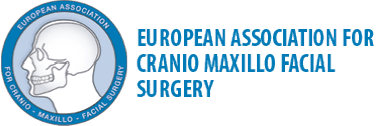Wisdom teeth (Third molar surgery)
Wisdom teeth are the last molars to erupt into the mouth, usually between the ages of 18 and 24 years. In many people they can erupt into their normal position in the dental arches with no problems. However, it is common for them to be impacted or be only partially through the gum which can cause problems including: infection, pain, swelling, bad tastes and difficulty opening your mouth. This can last for days but sometimes weeks. In rare cases the infection can spread and cause severe illness.
Surgical removal of troublesome wisdom teeth can be carried out as a day case procedure. It can be done:
- Fully awake with numbing using a local anaesthetic
- Partially awake with intra-venous sedation. This is a good option for anxious patients.
- Fully asleep under general anaesthetic. This is used when the wisdom teeth are deeply buried in the jaw or patients are feeling very anxious.

This is a routine operation and most people are back to normal life after a week. All procedures carry risks and we try to minimise any problems. We will talk to you about these at your consultation. Mr Duncan and his team will request an xray (Orthopantomogram or OPT) at your initial consultation to assess your wisdom teeth and how close the roots are to the important nerves in your lower jaw.

- Post-operative pain – easily controlled with simple but regular pain-relief for approximately 1 week
- Swelling – ice packs to the face, or crushed ice to chew helps minimize the degree of swelling in the first few days after surgery
- Bleeding – direct pressure with a clean gauze pack for 30 mins by biting down on the gauze should stop the bleeding, but expect a slight ooze over the following 24 hours after surgery.
- Temporary or Permanent numbness to the lower lip, chin or tongue (on the side of the lower wisdom tooth that is extracted) due to the nerves running close to the tips of the wisdom teeth in the lower jaw, or close to the tongue. Mr Duncan will explain this in detail and he may request a further investigation (CT scan) to assess the proximity of the nerve to the tooth roots in 3 dimensions. If there is a very close relationship of the nerve to the root tips, rather than removing the entire wisdom tooth, he may well carry out a coronectomy (removal of crown or white part of the tooth only, leaving the roots behind, thereby minimising the risk to the nerve and hopefully preserving the sensation to the lower lip.
- ‘Dry Socket’ a localized bone infection in the socket. It is more common in smokers and those patients with poor oral hygiene. It can be managed by dressing the socket with medication. In some cases, a short course of antibiotics is required to resolve it.
- Limited mouth opening (Trismus). This normally resolves shortly after the procedure.
Surgical removal of wisdom teeth:
The gum around the wisdom tooth is peeled back from the bone. Bone is then removed from around the wisdom tooth carefully in a gutter.




Buried roots, decayed unsaveable teeth, loose teeth from gum disease
Your dentist may not be happy to remove buried roots, or teeth that are close to nerves or your sinuses. Root-treated teeth tend to be more fragile and likely to fracture during extraction. In which case referral is warranted.
Often a flap of gum is elevated, to access the root of the tooth and the tooth is drilled out (similar to dental fillings).
Following extraction, the gums are stitched back into their original position with dissolving stitches, which will usually disintegrate themselves in 2-3 weeks.
It can be done:
- Fully awake with numbing using a local anaesthetic
- Partially awake with intra-venous sedation. This is a good option for anxious patients.
- Fully asleep under general anaesthetic. This is used when the wisdom teeth are deeply buried in the jaw or patients are feeling very anxious.
Apicectomies
The tip of the root of a tooth is known as the apex and in certain circumstances surgery to remove the tip of the root (apicectomy) is required. (Fig 1)

If a tooth has a dead nerve, the tooth will then require a root canal treatment. This is routinely carried out by your dentist and in most cases this enables you to keep the tooth functioning in your mouth without any pain. Sometimes this does not work and the root filled tooth can become infected often causing pain, swelling or a spot appearing on your gum. (Fig 2)

If this occurs, it is now considered normal practice to repeat the root treatment. If this doesn’t resolve the problem or a re-root canal treatment cannot be done an apicectomy is indicated.
What does an apicectomy involve?
A local anaesthetic to numb the infected tooth is given. The gum around this tooth is peeled back to access the tip of the infected tooth where the infection and/or cyst is sitting (Fig 3)

A few millimeters at the tip of the tooth is drilled off and removed. A filling is then placed in the end of the root to seal the root canal system and prevent any further infection. The gum is stitched back into its original position with dissolving stitches, which will usually disintegrate themselves in 2-3 weeks. (Fig 4 – below)


The bony defect then fills in with new bone over a period of 6-18 months depending upon the size of the defect and initial infection.
It can be done:
- Fully awake with numbing using a local anaesthetic
- Partially awake with intra-venous sedation. This is a good option for anxious patients.
Occasionally a cyst may be attached to the root tip, in which case this would be removed at the same time as the apical surgery. It may sometimes be sent to the pathology department for examination. This can take several weeks to process, so Mr Duncan will arrange for a follow up appointment usually 6 weeks after the operation to assess healing and provide you with your pathology report.





